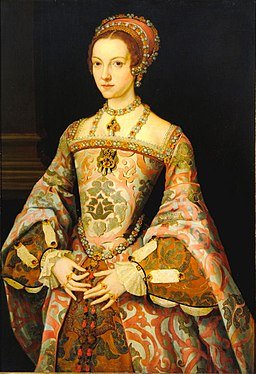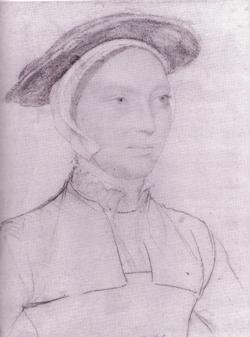Lives of Tudor Women, Part Two
Historical novelists are sometimes suspected of importing twenty-first-century values into sixteenth-century novels. While it's true that most authors seek to connect their readers with their novel's women of the past, it isn't necessary to ascribe new values to past women. They were, in many ways, much like us.
They valued education. Although medieval women's education was often limited to gentler feminine arts such as dance, needlework, and playing of the lute or virginals, by the beginning of the Tudor era, women were much more interested and involved in intellectual education. Queen Catherine of Aragon ensured that her daughter, Mary, had a strict regimen of demanding studies following her own upbringing. Sir Thomas More is often credited with putting practice to the idea that non-royal women deserved as much education as noble or highborn men. As a result, his daughters completed an education in classical studies, languages, geography, astronomy, and mathematics.
Queen Katherine Parr's mother, Maude, educated her daughters in accordance with More's program for his children, eventually running a kind of "school for highborn girls" after she was widowed. Eventually, educating one's daughters was seen as a social necessity, and men expected their wives to be able to play chess with them, discuss poetry and devotional works, and be conversant in the day's issues.
They knew they couldn't marry for love - the first time - but desired it anyway. Most historical readers understand that women in the Tudor era were chattel, legally controlled by their fathers and then their husbands. They married for dynastic or financial reasons; marriage was an alliance of families and strategy and not of the hearts. And yet, these women, too, had read Song of Songs wherein a husband and wife declare their passion for one another. Classically educated as they were, Tudor women had unquestionably come across the Greek myths, including Eros and Psyche, and perhaps had even read the medieval French love poem, Roman de la Rose.
If a woman was left widowed - and that happened quite often - she was free to remain widowed and under her authority or to marry whom she wished. Henry VIII's sister, Mary, married King Louis XII of France first for duty. When he died, she married Charles Brandon for love. After Mary's death, Brandon married his ward, Katherine Willoughby, her duty. Later, she married Richard Bertie for love. Mary Boleyn, Anne’s sister, married William Carey for duty and Willam Stafford for love. Katherine Parr married three times for duty, including her third husband, King Henry VIII. Her fourth marriage, to Thomas Seymour, was for love.
High and lowborn worked inside and outside the home. Highborn women were often ladies in waiting to the queen, a demanding, full-time job with little pay and time off. They ran the accounts for their husband's properties and juggled household management. For example, Katherine Parr's sister, Anne, served in the household of all six of Henry VIII's wives. Some highborn women, such as Lady Bryan, became governesses. Lower-born women were lady maids, seamstresses, nurses, servants, or baby maids, in addition to helping their husbands as fishmongers or in the fields.
Although there are some notable differences, we have much more in common with our highborn sisters of five hundred years ago than one may think!
Lives of Tudor Women, Part One
Lives of Tudor Women, Part Three
{Anne Parr photo credit: Hans Holbein [Public domain], via Wikimedia Commons}
{Queen Katherine Parr (1512–1548) (after Master John), English School, 17th or 18th century, via Wikimedia Commons}

